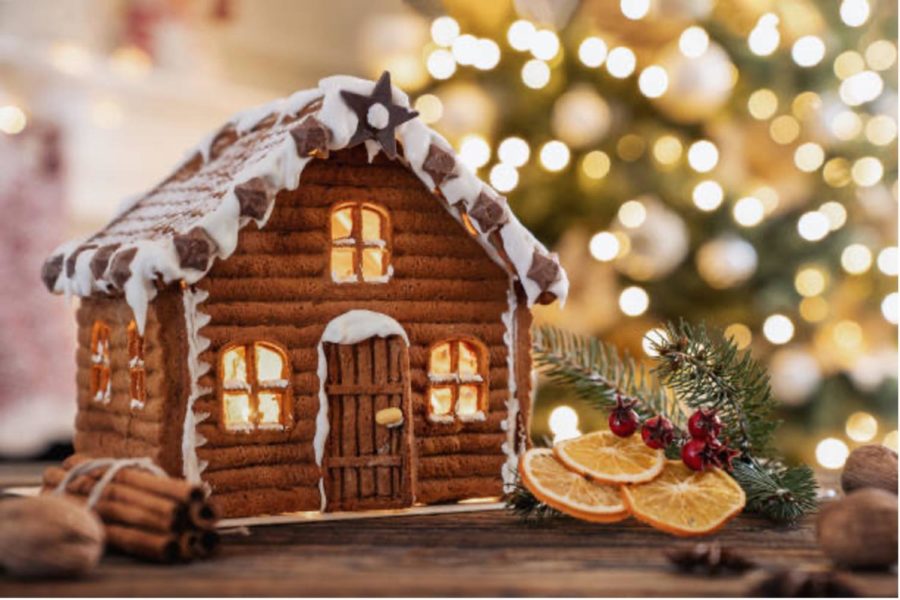Gingerbread houses: Are they as good as they seem?
There are a multitude of reasons to explain this commonly asked question.
Licensed by iStock
Gingerbread houses can be intricately designed, but more often for display than for a dessert.
During the winter months, especially around Christmas time, gingerbread houses are very popular. Some people buy kits from their local stores to decorate easily while others create their own gingerbread wonderland. So much work and preparation goes into the creation of these houses, yet the question still stands: Are they just made to look at, or are they made to eat?
Gingerbread has a long history dating back to the 11th century in Europe. The term “gingerbread” originally was used to mean “preserved ginger.” The strong scent of the ginger was used to mask the stench of decaying meat before refrigeration was invented.
In the 15th century, people began to experiment with ginger, eventually creating the gingerbread cookie, which was made of ground almonds, sugar, stale breadcrumbs, rosewater, and ginger. These cookies were made to be decorated by young women to gift to men to encourage them to fall in love.
The gingerbread cookies became gingerbread houses in the 16th century in Germany where they became associated with a Christmas tradition. They first became popular with the classic tale of “Hansel and Gretel,” in which the two children walk through the woods to find a large gingerbread house filled with sweets.
When people started to immigrate to the United States, they brought gingerbread with them and continued the holiday tradition. The gingerbread of today is typically made with ingredients such as flour, eggs, and ginger and are typically decorated with icing and assorted candies. People who make their own gingerbread houses use royal icing because it “glues” the house together by drying quickly.
So, why don’t people like gingerbread houses? There are a multitude of reasons to explain this commonly asked question.
Problem #1: They are difficult to make.
Gingerbread houses that come in kits typically only have enough icing to barely sustain the construction of the house, let alone the decoration with the little amount of icing supplied in a tiny plastic bag. The icing doesn’t hold well and the house falls apart almost immediately after a supporting hand is removed.
Problem #2: They don’t really taste that great.
Gingerbread houses that are made to be looked at sit out on display for days or weeks, becoming stale and collecting dust. Taking a bite into one of those may hurt one’s teeth. Additionally, the decorations supplied in gingerbread house kits are usually rock-hard candies that don’t taste good by themselves.
Problem #3: Most of the time gingerbread houses are made to be looked at.
Many people who create their own houses from scratch spend countless hours baking the gingerbread and waiting for it to cool, on top of mixing icing, melting sugar, and designing the house. After all that work to make it look beautiful, do they really want people to tear it apart to take a bite?
An anonymous senior at Hills said, “I love making them, but they taste disgusting. It’s like you can never find one that actually tastes good.”An anonymous freshman said that they “like them, but only as decoration because they are usually stale or old.”
On the other hand, the process of making a gingerbread house can be filled with memories of happiness when created with family and friends. Some make it a tradition to build and decorate a gingerbread house together, while others create a competition over who can make the best one.
Mikka Jarvis, a junior at Hills said, “Personally, I love making gingerbread houses. I make one with my brother every year and we have so much fun doing it together.” ‘
This can also be a fun winter activity to do on a snow day or over Christmas break when feeling bored at home. Some newer gingerbread house kits even have interlocking puzzle-like pieces on each side of the house, making the house more stable and easier for people to build.
If creating holiday traditions and memories is a priority, then gingerbread houses may be worth making. If practicality is more important, then building gingerbread houses is probably not the best tradition to follow.

Samantha Lazar is a senior at Hills. She joined the publication her freshman year as a staff writer and primarily wrote articles for the College Corner section. This year, Lazar is eager to continue writing articles and managing stories for the Life & Style section.
Fun fact: Lazar trained her dog to be a therapy dog, and she volunteers at a library with her.












































